Wil reviews the 800mm wide Syncros Hixon iC 1.0 Rise carbon fibre handlebar
As the component arm of Scott Sports, Syncros originally developed the distinctive Hixon iC handlebar specifically for the flagship Genius 900 Tuned – a bike I tested last year.
Standing for ‘Integrated Cockpit’, this eye-catching design encompasses a shapely carbon fibre bar with the steerer tube clamp built directly into it. The goal? Simplify the entire structure by eliminating the traditional stem, therefore creating a potentially simpler, lighter and stronger bar.
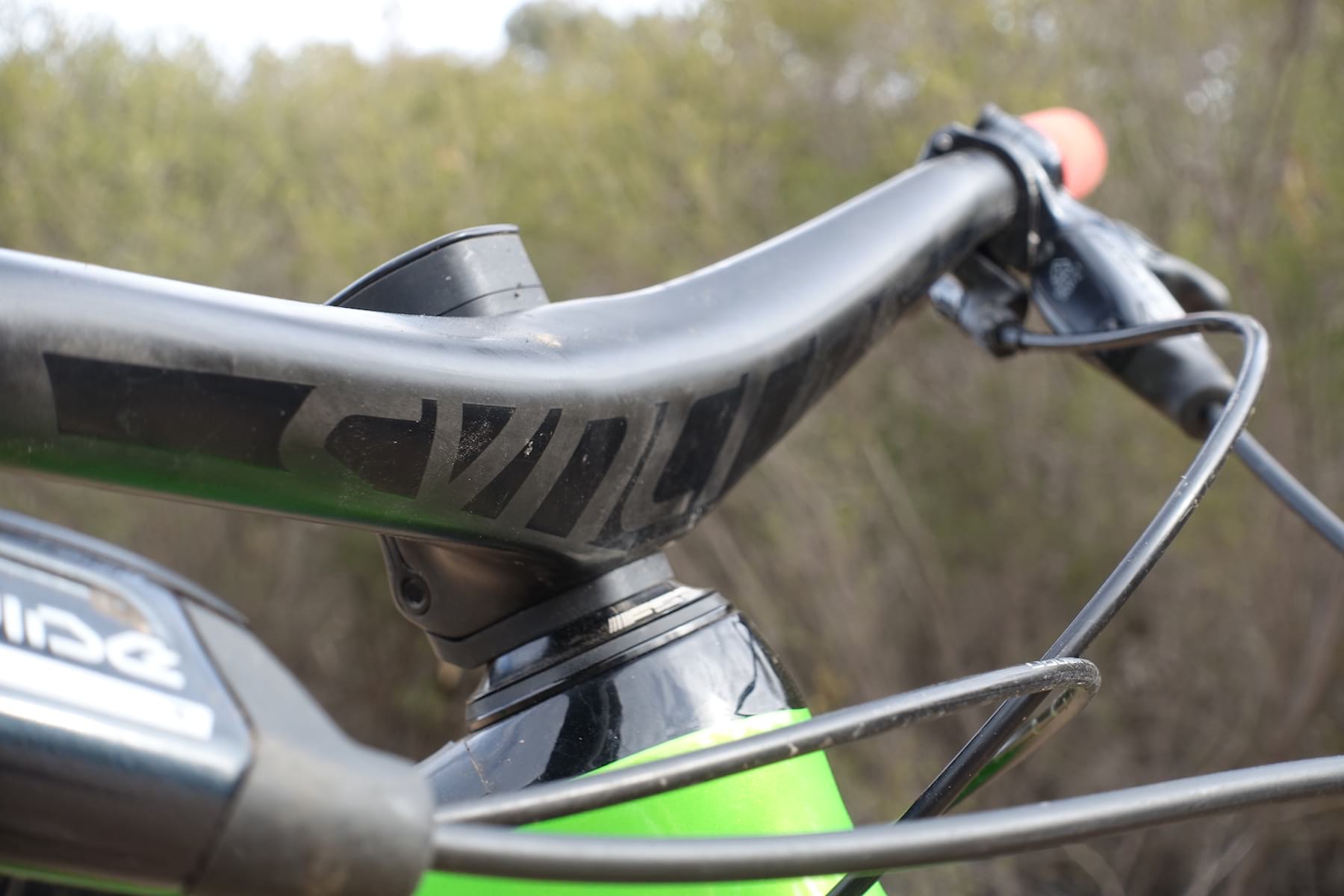
As well as coming on select Scott models, the Hixon handlebar is also available aftermarket in two different versions;
- Hixon iC SL – 780mm wide, 12mm rise with 40, 50 & 60mm virtual stem length options
- Hixon iC 1.0 Rise – 800mm wide, 20mm rise with 40 & 50mm virtual stem length options
Syncros also offers the iC design in a narrower XC handlebar called the Fraser, which shrinks the width down to 740mm. The Fraser iC SL can be had with 60, 70, 80 and 90mm virtual stem lengths, and it’s what you’ll see strapped to the front of Kate Courtney’s and Nino Schurter’s XC race bikes.
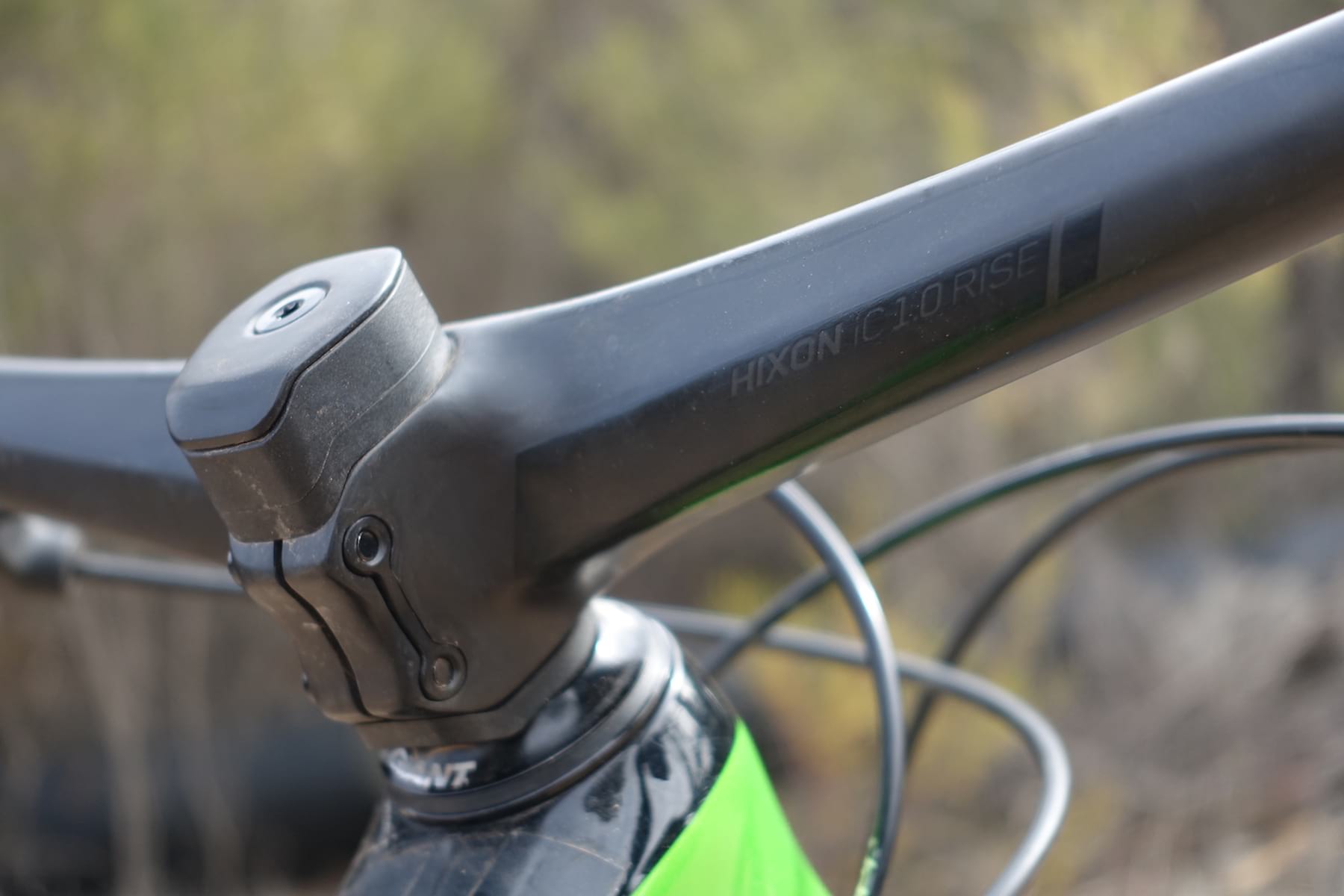
Syncros Hixon iC 1.0 Rise
The model on review here is the biggest banger in the lineup; the Hixon iC 1.0 Rise. It measures 800mm wide and I’m testing the 40mm virtual stem length. It looks shorter than this, but if you look closely, you’ll see the handlebar actually angles forward before it sweeps back to the grips.
As well as being 20mm wider than the Hixon iC SL, the Hixon iC 1.0 Rise is 8mm higher at 20mm, and it has a little less sweep too.
Syncros builds each iC handlebar with a completely unique mould, which sounds expensive. High-end Japanese carbon fibre is laid up in a single piece, so no separate bonding is required. To reduce the torque required on brake, shifter and dropper lever clamps, friction-boosting texture is added to this area of the handlebar by sanding in the finishing stage.
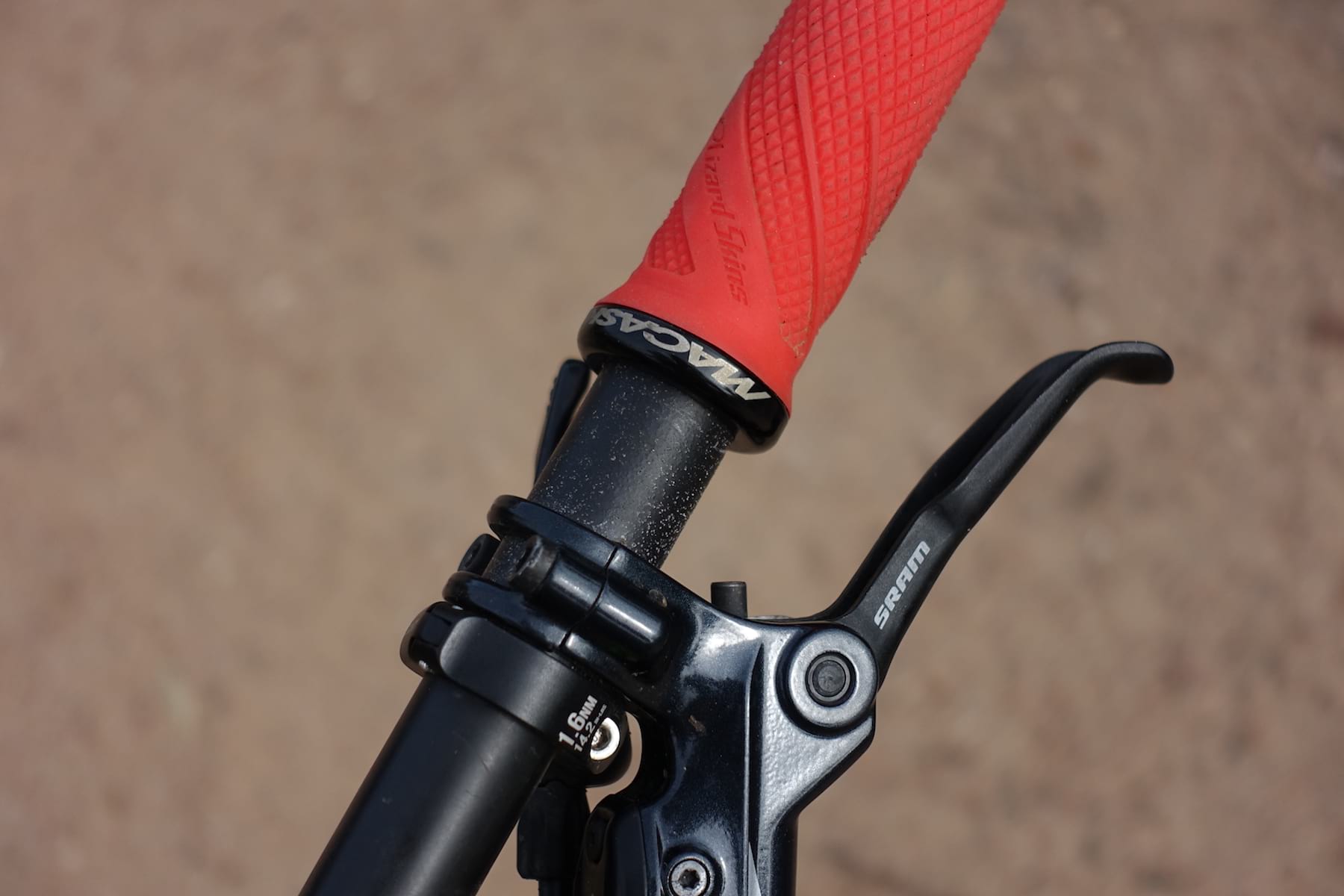
What Are The Advantages?
Firstly, it’s bloody light. 273 of your finest Earth grams, to be exact. Let’s put that in perspective with a couple of mainstream carbon bar and stem combos;
- ENVE 800mm wide M7 handlebar & M7 35mm stem: 325g
- Renthal 800mm wide Fatbar Carbon & Apex 40mm stem: 343g
- Truvativ 800mm wide Descendent Carbon DH & 40mm stem: 374g
Of course if we’re also talking about alloy bars, the differences are even more substantial. Syncros’s own Hixon 1.5 alloy bar weighs 315g on its own. And that’s before you even add a stem.
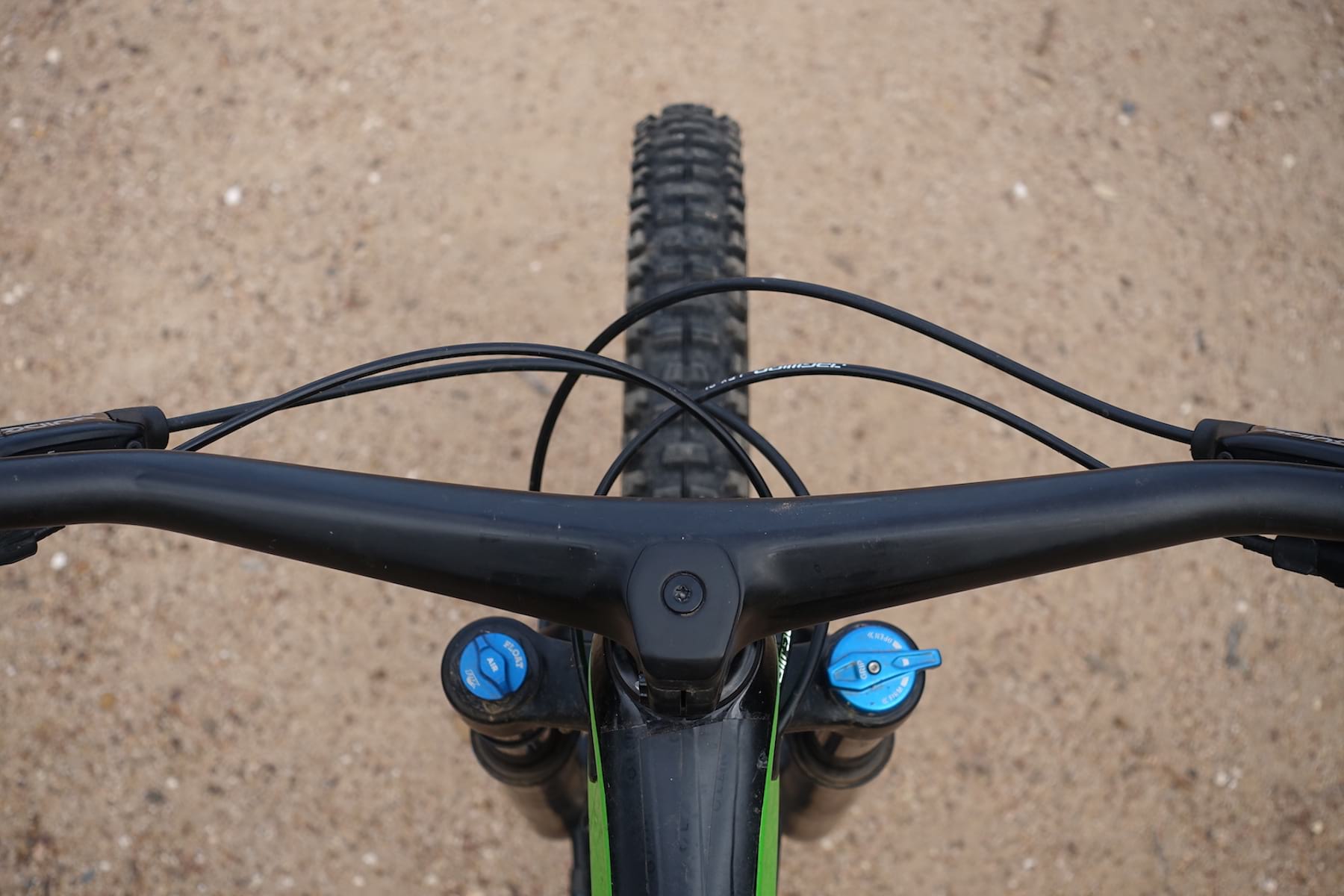
The alloy Giant bar & stem I took off the Trance 29 test bike weighed in at 444g. That’s a 38% weight reduction, which is a huge percentage. And after all, weight weenieism is all about percentages. Save a few grams here and there, and it all adds up.
As well as being lighter, the Hixon iC is also simpler. There are of course fewer bolts to worry about, and there’s no need for Syncros to overbuild the centre of the bar to cope with clamping forces. The result is that the shape, profile and carbon layup can be optimised for the whole structure to achieve the desired levels of stiffness and vibration damping.
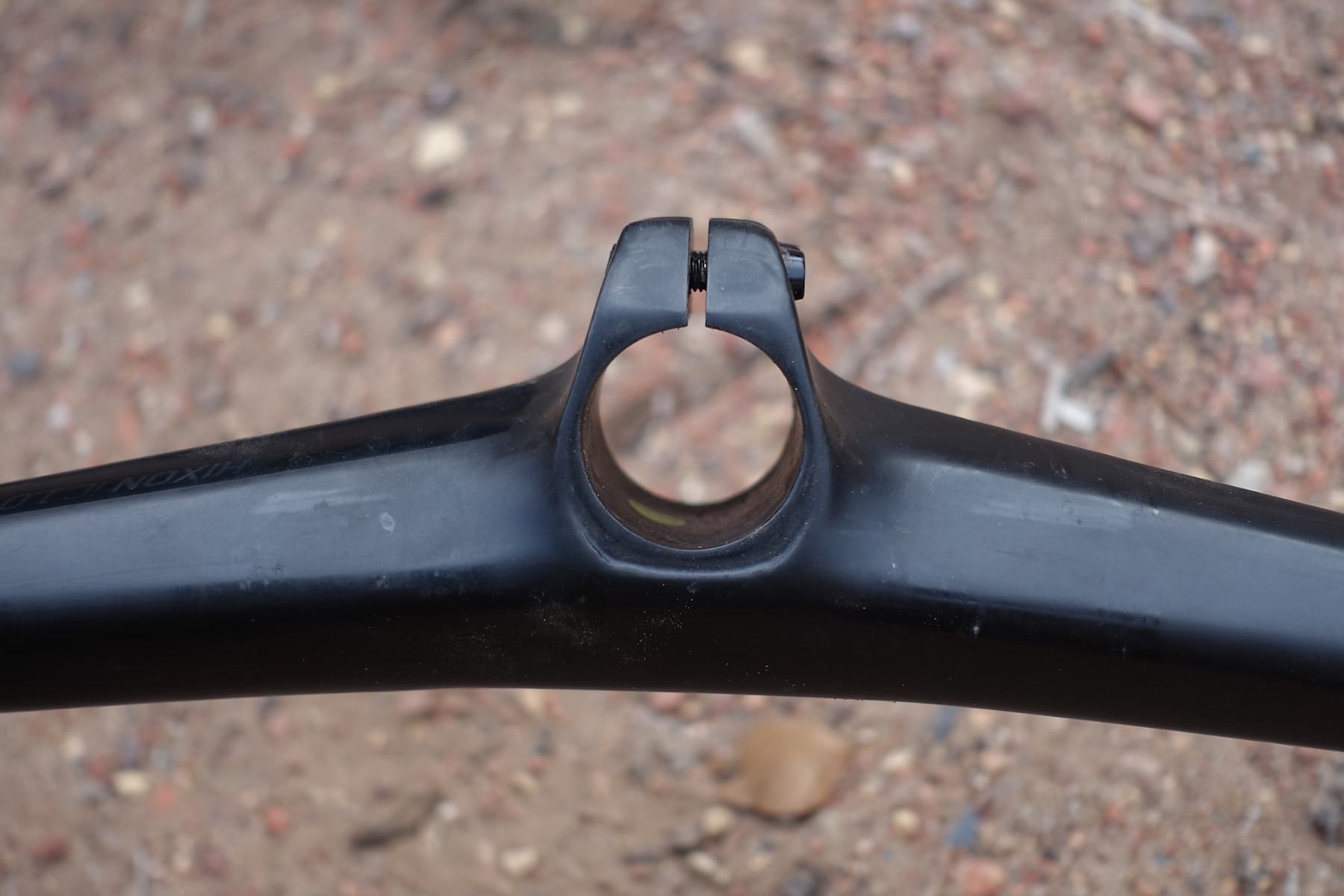
And The Downsides?
It ain’t cheap. But then you are essentially getting a carbon bar and stem in one. And if you look at a comparable ENVE M7 setup, which costs an eye-watering £440, then the Hixon iC is a comparative bargain.
Being an integrated design, of course you can’t easily change the stem length. Well, technically you can, but you gotta buy a whole new bar. Likewise, you also can’t tweak the bar roll, so the shape you see is the shape you get. You wanna be real sure about the dimensions before plumping up for one of these.
On the Hixon iC 1.0 Rise, you’ve got a 6° upsweep and a 7º backsweep, along with 20mm of rise. These numbers were primarily developed for the front end of the Scott Ransom with its 64.5° head angle. You can of course fit the Hixon to any bike with a standard 1 1/8in steerer clamp diameter, but bear in mind that as the head angle changes, the effective sweep will change too.
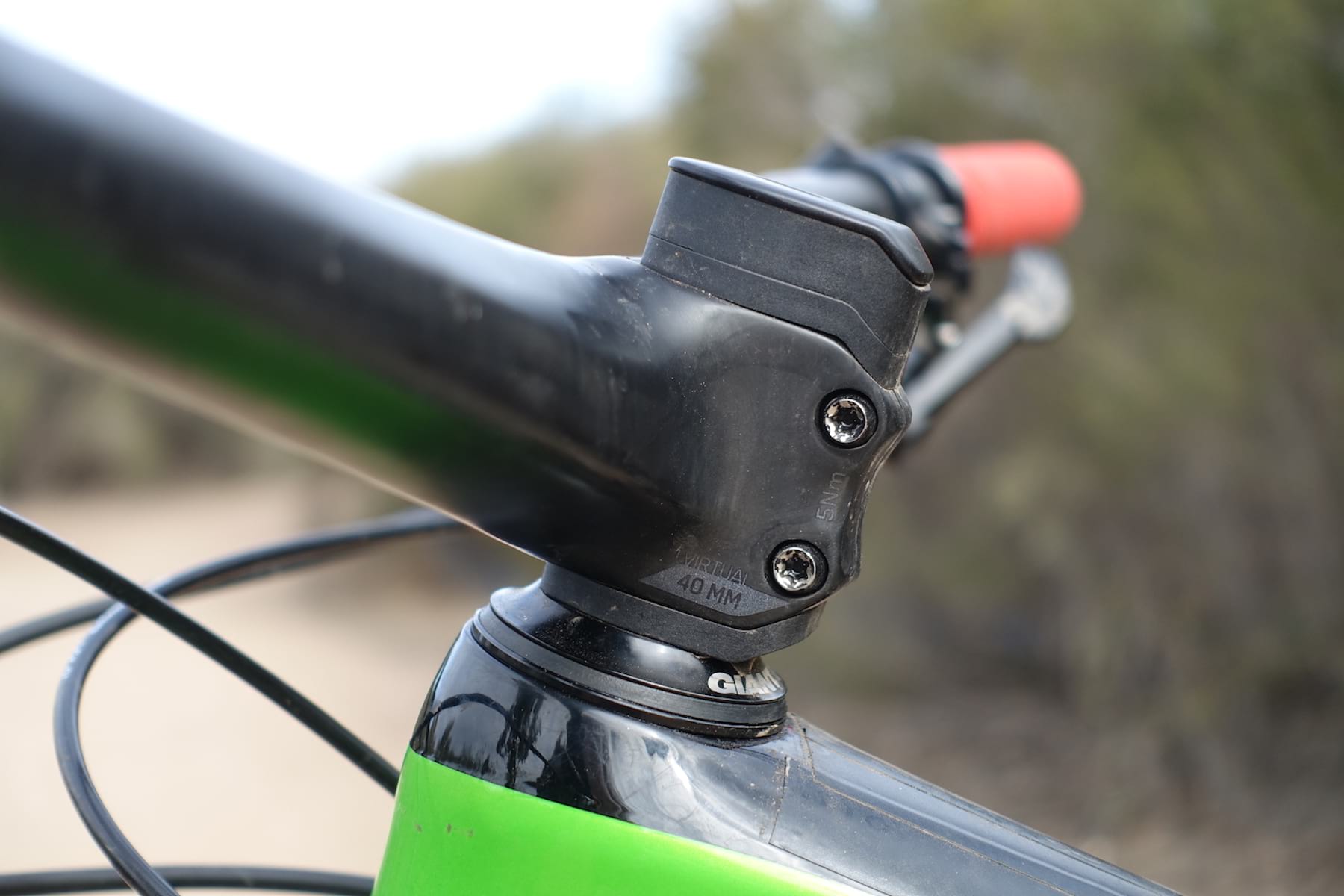
Installation
I’ve already ridden this same bar in a 780x50mm version, which comes as stock equipment on the 2019 Scott Ransom 900 Tuned I reviewed separately. Syncros then shot this 800x40mm bar out for me to test, which I fitted to the Ransom, and have since been using it on a variety of other test bikes that include the Canyon Neuron CF, Giant Trance 29 and Whyte S-120.
With a few less bolts to worry about, fitting the Hixon is dead easy. There are just two bolts on the back of the steerer clamp, which require a T25 torx key. I’d recommend using a torque wrench to hit the recommended 5nM. You can add some carbon friction paste between the clamp and the fork steerer tube if you like. According to Syncros it isn’t a requirement, but it also won’t hurt.
Included with the bar are several plastic stem spacers that integrate with the shape of the carbon clamp. These complete the xenomorph look, though they’re not essential – you can use regular round headset spacers if you prefer.

On The Trail
First up, I really like the Hixon’s shape. It’s a comfy bar, with the 6×7° sweep putting the grips in a very natural position for my paws.
I did find on the Neuron CF, with its steeper 67.5° head angle, that the Hixon felt a little square in its profile. This makes sense, because on a steeper head angle, you’re effectively rolling the bars forward compared to a slacker bike. In terms of ergonomics, I preferred it fitted to the slacker Trance 29 and S-120.
As for the ride quality, it’s kinda hard to evaluate how a handlebar feels without comparative testing. So that’s exactly what I did.
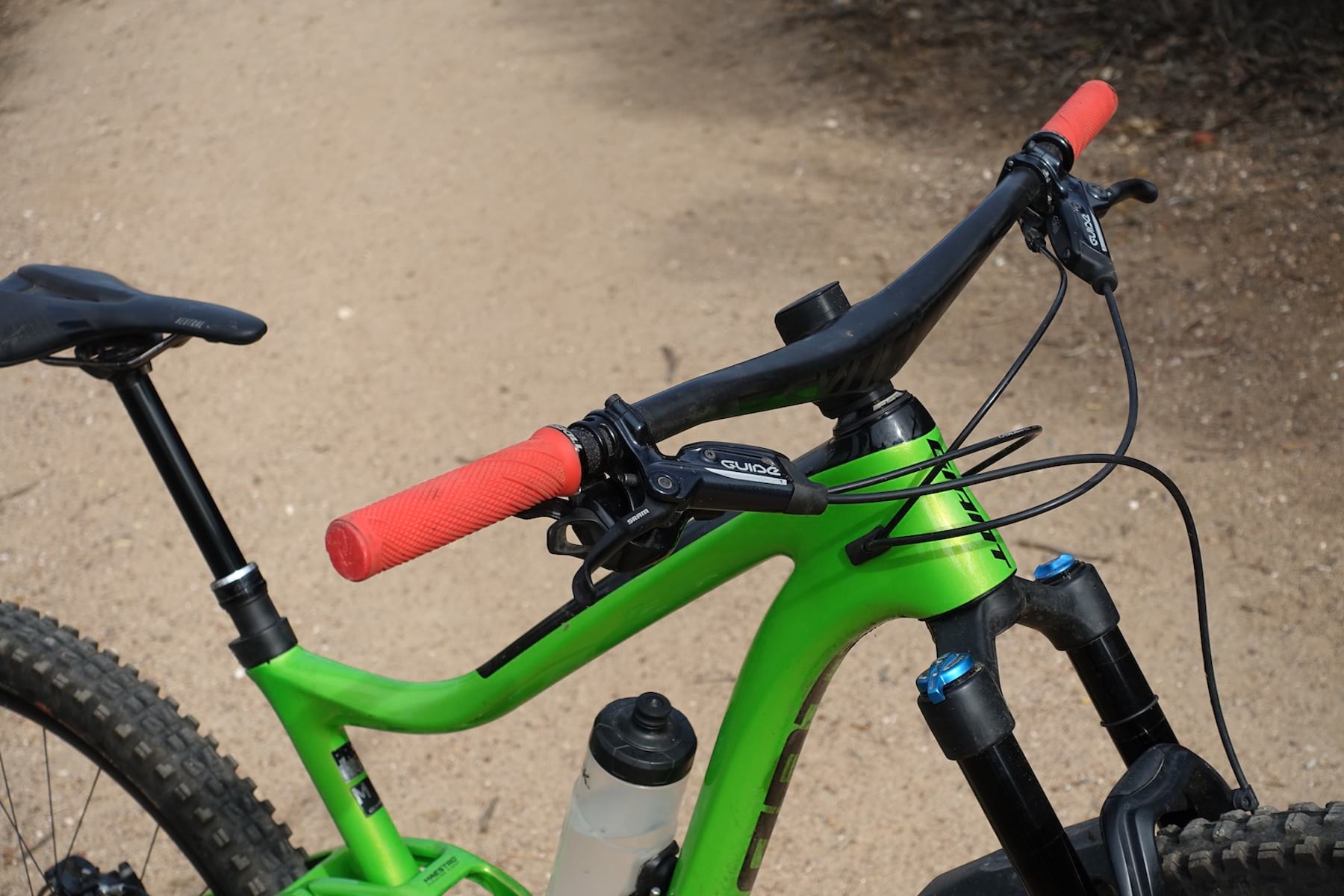
I took the Whyte S-120 test bike along with the stock alloy handlebar and stem, a Renthal combo (Fatbar Carbon & Apex stem), and the Syncros Hixon iC 1.0 Rise out to a local test loop. I fitted the bars with the thinnest and least squishiest grips I had – a set of Lizard Skins MacAskill lock-ons – and rode gloveless to ensure the haptics were as undiluted as possible.
The test loop included a bitumen road climb, which I hammered out of the saddle with the suspension completely locked out. After unlocking the suspension at the top, I bombed back down a super rocky and loose singletrack descent. I rode just shy of a dozen laps, swapping the bar setup each time I reached the bottom of the descent. While I would have liked to have tested more bars, these were all I had to hand, and at least I was able to get a good feel for the differences.
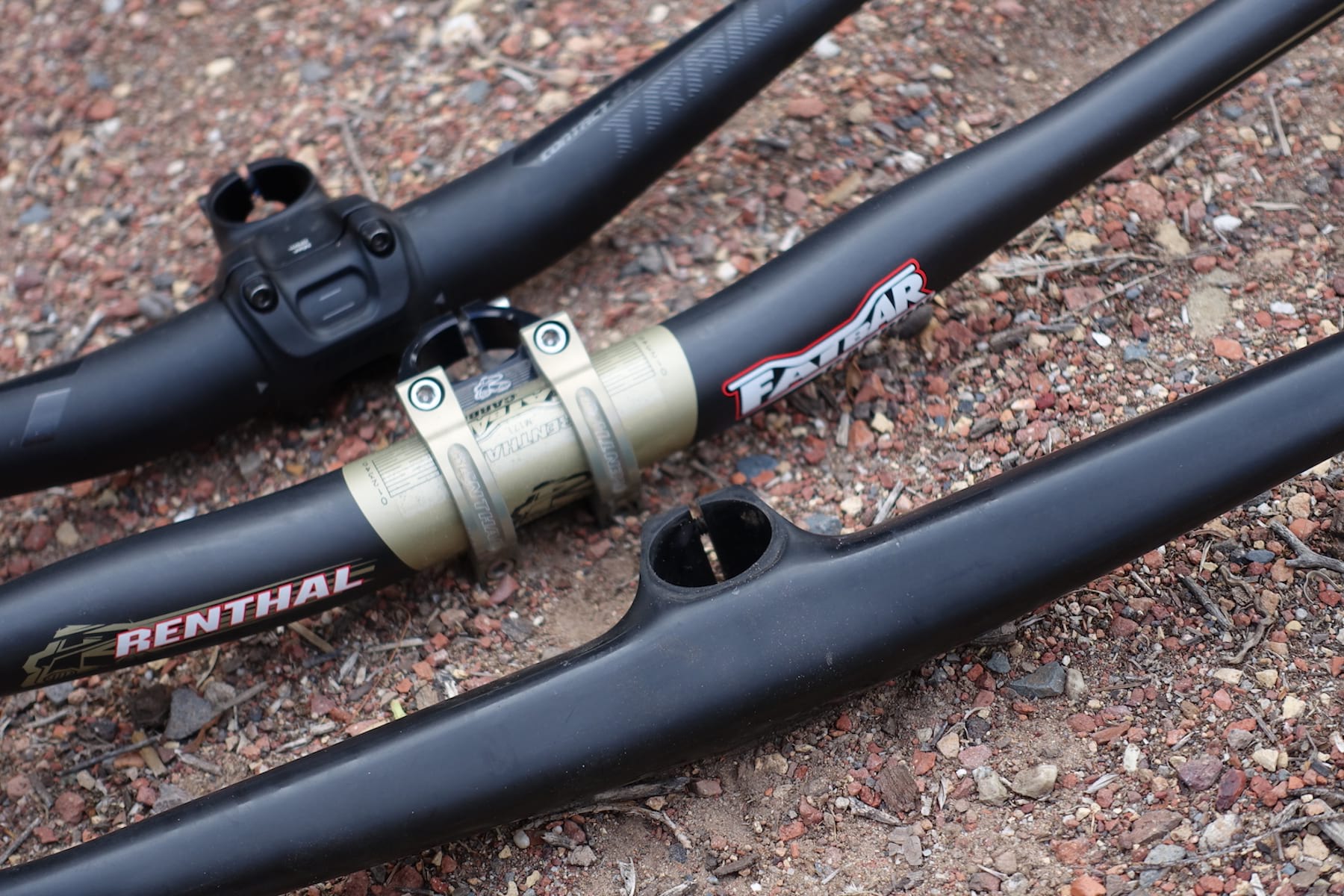
Out of the three options, the Hixon was the smoothest and most comfortable bar by far. Directly compared to the stock alloy setup, the Hixon had noticeably better vibration damping on both sharper hits and across high-speed chatter. Bear in mind the loop I was riding was quite short and punchy, and the longer and rougher the descent, the more evident this damping quality will be. In theory, this improved comfort will reduce strain on wrists and forearms on longer, harder rides.
The Hixon was also smoother than the Renthal Fatbar Carbon, though that is already known for being a stiff DH-oriented handlebar. Curiously, the Fatbar Carbon feels almost dead-straight in comparison to the Hixon, even though they both share a 7° backsweep on paper. This might have something to do with the way the Hixon kicks forwards then backwards, giving it a more aggressive angle at the tips of the bar. Whatever the cause, I really like it. But if your preference is for less backsweep, then the Hixon might not be for you.

What Could Be Improved?
Because of its non-round shape, mounting lights and GPS head units to the Hixon is a bit shit. If your light has a rubber strap attachment, it’ll fit on ok, but the swept profile means the light might end up pointing slightly to one side, if the light doesn’t have any rotational adjustment. For those who run something like an Exposure light with a solid alloy bar clamp, you’re basically out of luck here.
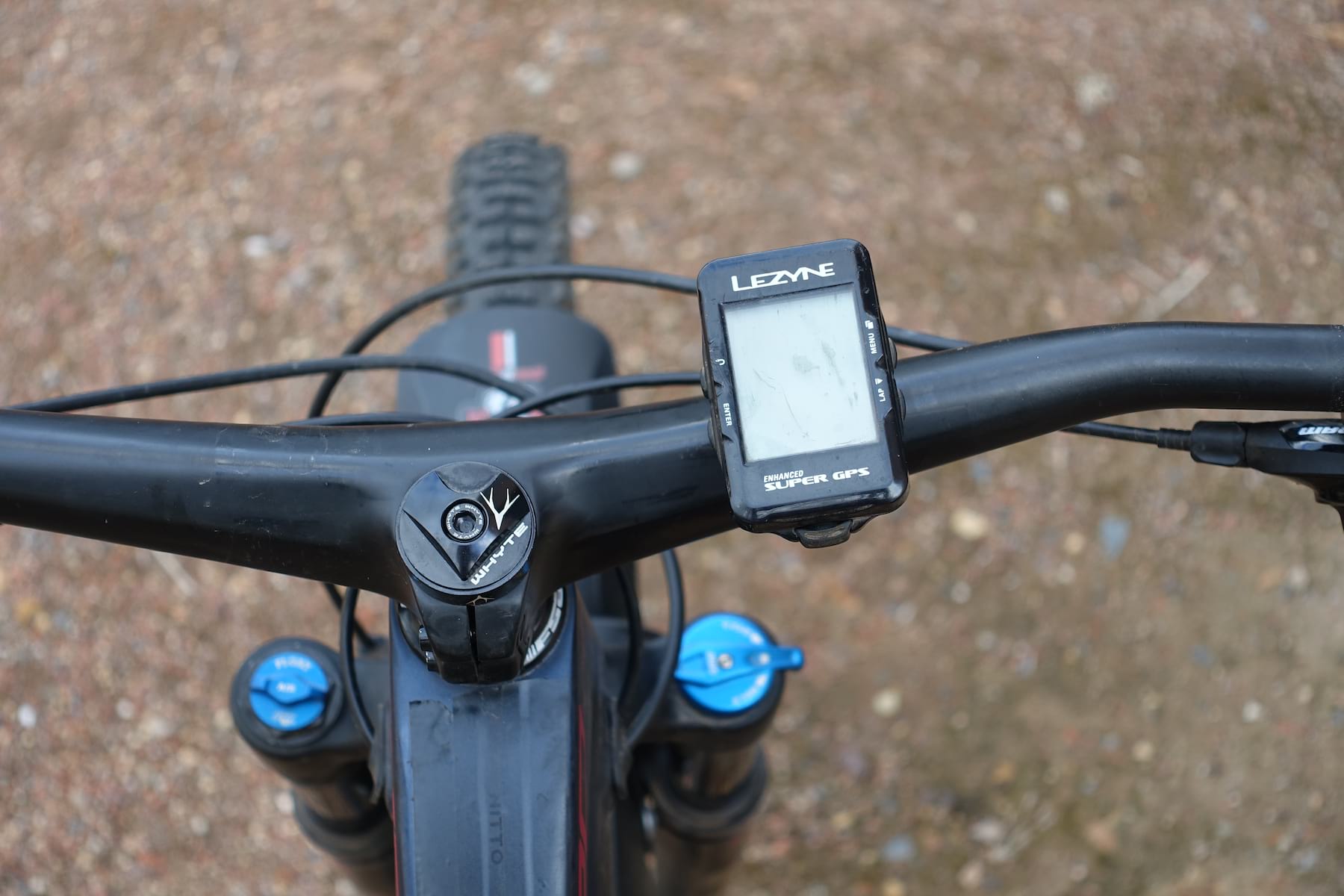
Syncros does make a special top cap with an integrated Garmin top cap, which is neat. I run a Lezyne GPS though, which inevitably sits at a visually-challenging angle that makes me twitch every time I look at it. I’ll look at throwing a K-Edge top cap mount on in the near future.
Along with improving compatibility with bar-mounted accessories, it’d be nice to see some sort of eccentric sleeve for the steerer tube clamp in order to adjust the sweep of the bar. I’m guessing that would not only add weight and complexity to the structure, but potentially the chance for movement and creaking though. As it stands, the Hixon is free of any of the creaks that can come from a traditional stem interface.
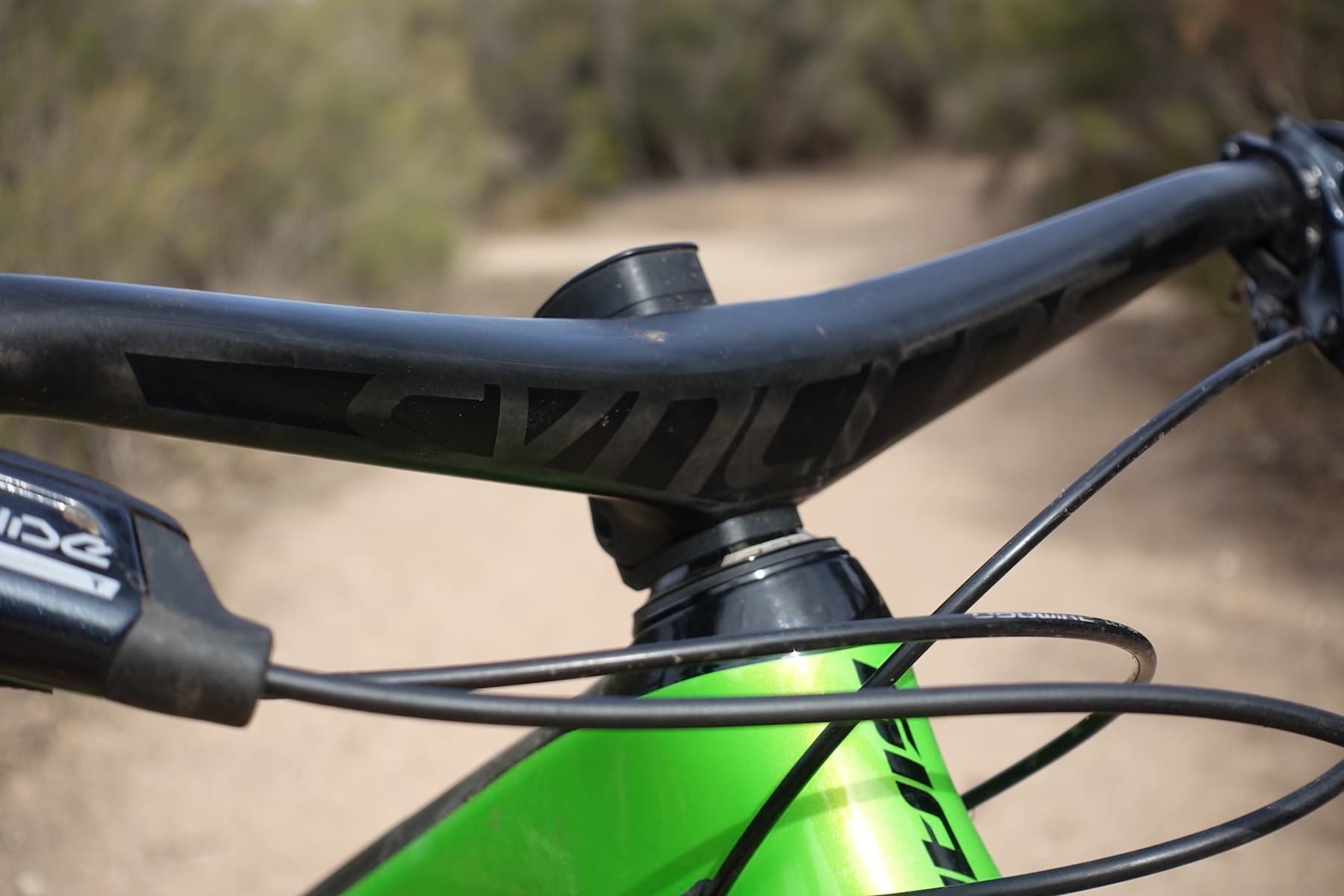
Overall
The Hixon iC 1.0 Rise is an undeniably high quality carbon handlebar that is exceptionally lightweight.
It is also very expensive though, so you’ll want to be in love with the aesthetics and slightly gram-obsessive to justify the cost. Personally, I’d like to see better compatibility with handlebar lights and GPS accessories before I could give it the double thumbs up.
As it stands though, this is a very trick bar that is also well-damped and shaped comfortably for those wanting a contemporary wide ‘n’ short cockpit.

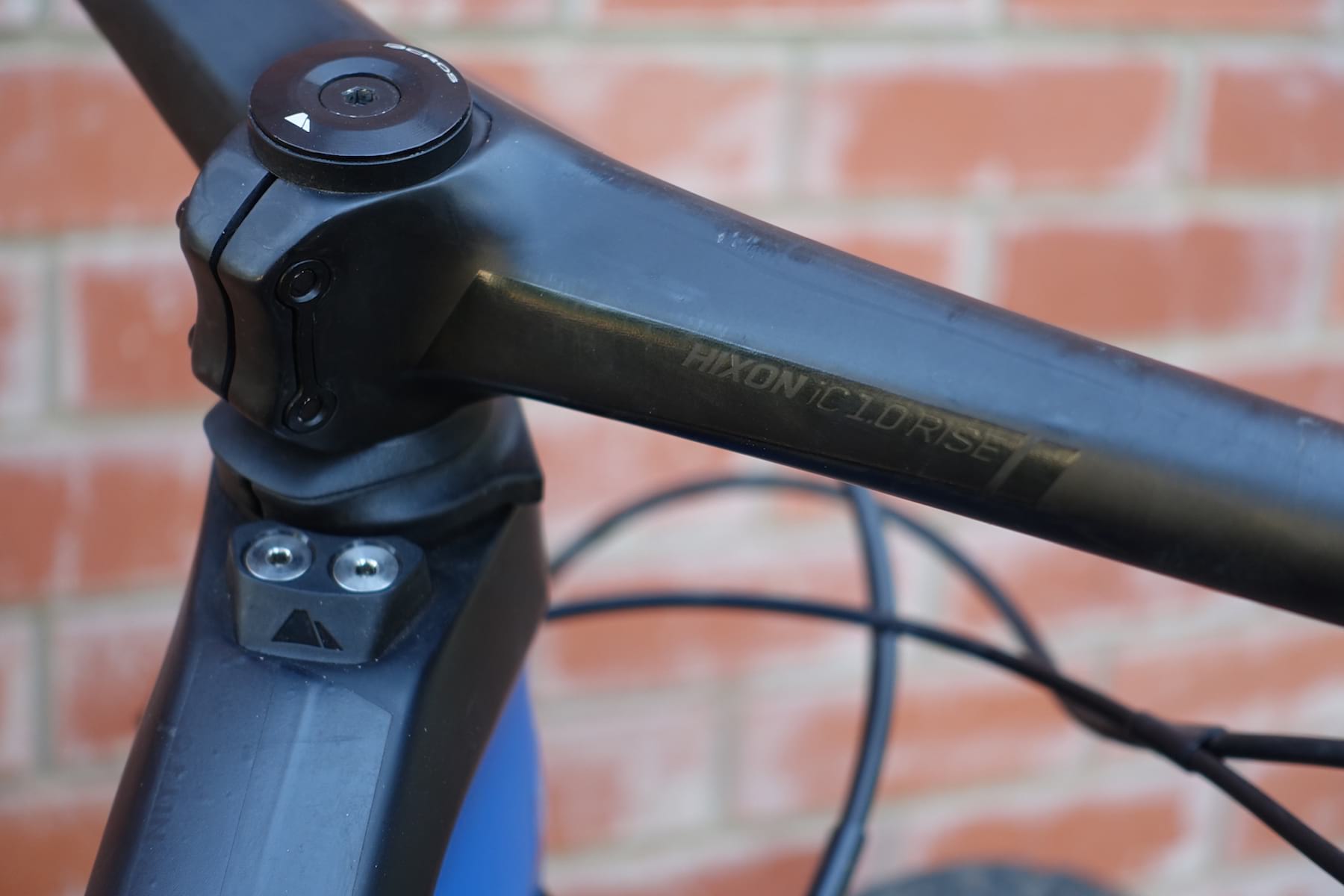




Another good article Wil; sounds like it’s almost perfect. Though for me the imperfections are practical ones which I think may put some other folk off too.